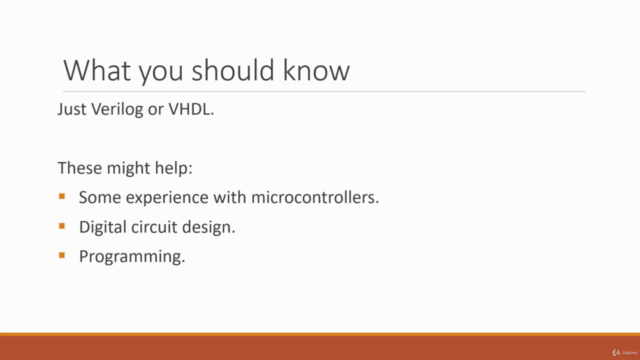FPGA Embedded Design, Part 4 - Microprocessor Design
Learn FPGA embedded application design starting with the basics and leaving with your own CPU.
4.40 (119 reviews)

1,341
students
5.5 hours
content
Jan 2022
last update
$64.99
regular price
What you will learn
How a CPU works.
How to design a CPU core of your own.
How to design an Instruction Set Architecture
How to design a CPU core in Verilog.
How to synthesize a CPU core for Altera and Xilinx FPGAs.
Screenshots




Related Topics
1243298
udemy ID
6/6/2017
course created date
7/24/2020
course indexed date
Bot
course submited by